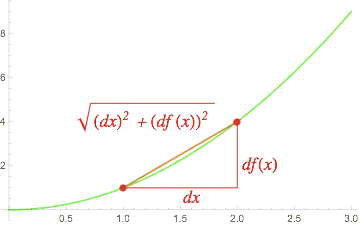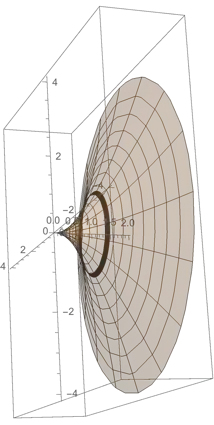I am trying to prove the following statement:
Let $f:[a,b] \rightarrow R$ be an integrable function. Prove that the area of surface revolution obeys:
$$A = 2 \pi \int\limits^b_a f(x) \sqrt{1 + \bigg(\frac{df(x)}{dx}\bigg)^2}dx$$
I tried using the area of a cylinder but I couldn't get to a point where I got the integral.

